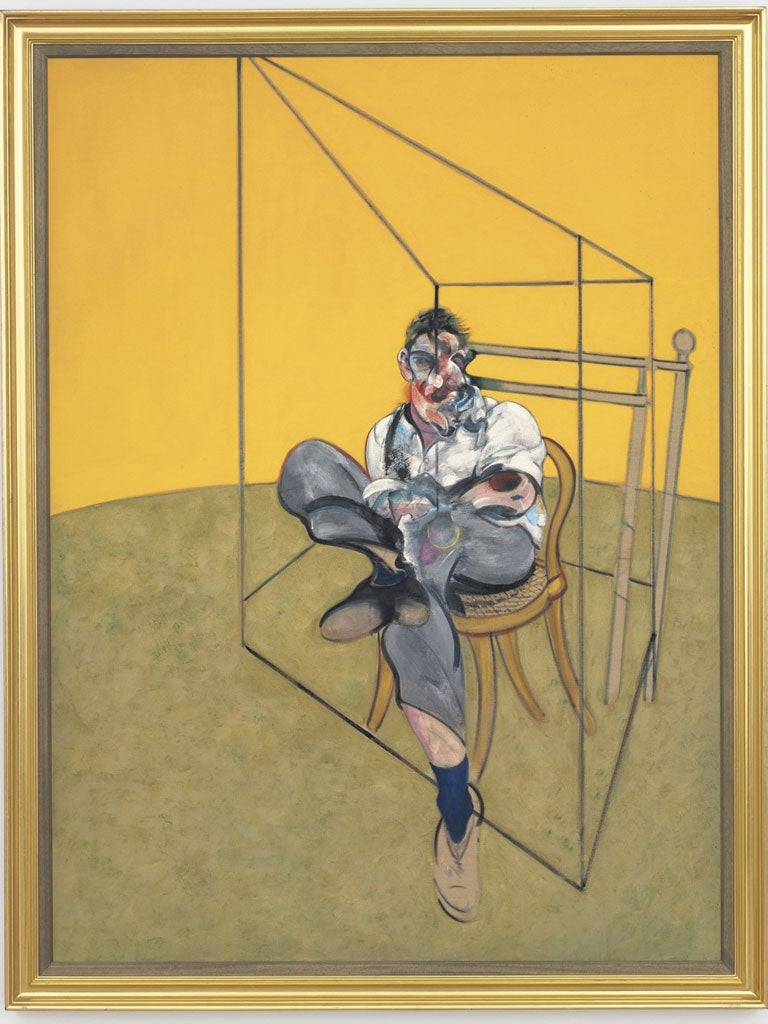2013 - the year in review: Was Francis Bacon's 'Three Studies of Lucian Freud' worth $142m?
Sale-room records fell repeatedly and resoundingly. But the underlying picture for investors may be more complicated

After all the fuss over “The Scream” becoming the most expensive painting ever sold at auction in 2012, the record lasted barely 18 months.
At the top end of the market, appetite for the biggest names in modern art remained undimmed in 2013. In the New York sales in November, Francis Bacon’s “Three Studies of Lucian Freud” sold for a whopping $142.4m, wrestling the title from Munch’s iconic work.
The news was met with some incredulity among art historians as the set of three paintings were not considered among the finest of the artist’s catalogue. One commented: “This was not A-grade Bacon. It shouldn’t have gone for $142.4m.”
Another record fell at the same auction. Jeff Koons’s “Balloon Dog (Orange)” sold for $58.4m, which saw the former investment banker jump Gerhard Richter as the most expensive living artist. That night Christie’s sale hit a new high of $691m.
Warhol remained a big draw as his foundation continued to sell a string of works throughout the year, while the museum bearing his name even set up a 24-hour video feed of his grave. In November, his work “Silver Car Crash (Double Disaster)” sold at Sotheby’s for $105.4m.
Ben Street, an art historian, said: “The market is so insatiable. If something becomes available, especially something large, everyone goes bonkers. The conclusion with these stories is always the market has gone crazy, and it has. But it can always get crazier.”
Despite the huge sums lavished on some of modern art’s big guns, commentators have begun to question whether the market was all that buoyant underneath. While works under $100,000 continue to sell and re-sell, it was the pieces in between that are getting stuck in the mud.
It is hard to track the market to any real degree of satisfaction, but commentators point to a few indicators, from the lots that are going unsold at the auctions to the Mei Moses World All Art Index for indications of a soft underbelly. Despite issues with the Mei Moses, it gave an indication that the market was not particularly strong; in 2012 the index declined 3.3 per cent and this year came back just 2.2 per cent.
Meanwhile, the major art dealers continue their expansion, with heavy hitters such as David Zwirner and Larry Gagosian continuing to flex their muscles, even though the latter lost Damien Hirst and Yayoi Kusamsa. According to The Art Newspaper, the empire builders may be squeezing out the smaller operators.
The strength of Qatar in the art market was cemented. It is believed that Picasso’s “Child with a Dove” is heading to the Gulf, following Cezanne’s “The Card Players” in 2011, and rumours abound that some large recent sales at auction will follow.
Sheikha Al-Mayassa bint Hamad bin Khalifa Al-Thani topped ArtReview’s Power 100 for the first time. The magazine revealed the Qatar Museums Authority spends $1bn a year on art and culture sponsorship.
Subscribe to Independent Premium to bookmark this article
Want to bookmark your favourite articles and stories to read or reference later? Start your Independent Premium subscription today.

Join our commenting forum
Join thought-provoking conversations, follow other Independent readers and see their replies